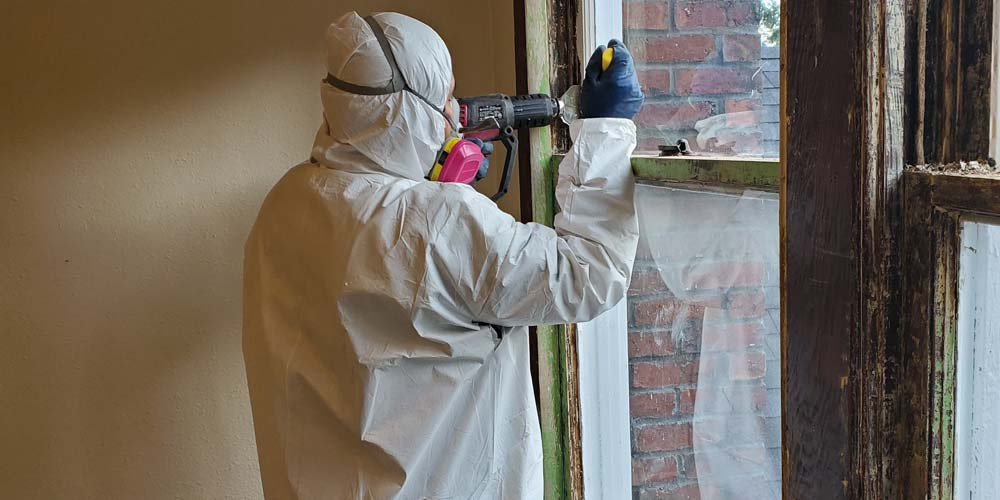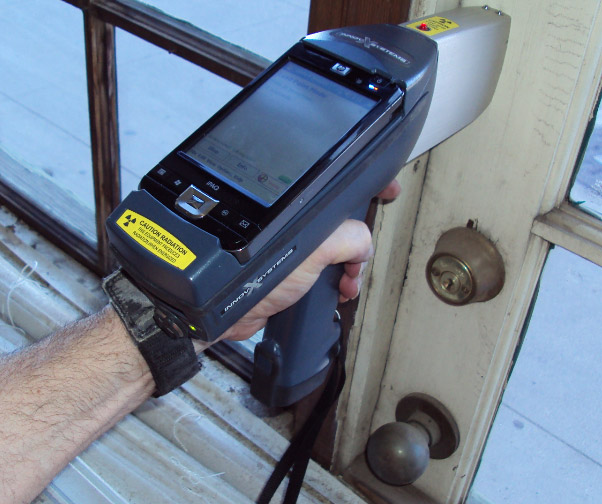Relied On Lead Paint Removal Company-- NYC's Premier Lead Abatement Service
Wiki Article
Essential Tools and Methods for Reliable Lead Violation Cleanup
Resolving lead violations properly requires a detailed technique that blends the right tools with calculated approaches. Simultaneously, the usage of specialized cleaning devices, such as HEPA vacuum cleaners and lead-specific cleansing agents, is vital for comprehensive impurity removal. Effective control techniques, including plastic sheet and adverse air stress systems, are vital to prevent the spread of dangerous products.Individual Protective Tools
Personal safety equipment (PPE) is an important part in the effective monitoring of lead contamination cleanup. PPE acts as a vital barrier, guarding workers from the hazardous effects of lead exposure, which can result in extreme health repercussions. The vital PPE for lead clean-up consists of respirators, safety clothes, handwear covers, and eye security. Each type of equipment is specifically made to reduce different risks connected with lead fragments and dust.Respirators, particularly those equipped with HEPA filters, are important for filtering system air-borne lead fragments, preventing breathing. Appropriate fit and seal checks are important to guarantee their efficiency. Protective garments, consisting of coveralls and non reusable suits, avoids lead dirt from adhering to employees' garments, decreasing the danger of second contamination. Handwear covers, typically made of nitrile or latex, shield the skin from straight contact with lead, while security goggles or full-face guards secure the eyes from dust and debris.
In addition, strenuous training on the correct usage and maintenance of PPE is vital. Workers need to be enlightened on wearing and doffing treatments to prevent contamination. Regular evaluations and substitutes of PPE elements are required to maintain their safety capabilities, making sure a safe and certified cleaning procedure.
Specialized Cleanup Tools

An additional essential device is the wet/dry vacuum, which can successfully cleanse up both dirt and fluid pollutants. These vacuum cleaners often feature HEPA filters to offer an extra layer of safety. Damp wipes or tack towels are likewise important for surface cleaning; they are specifically designed to catch and hold lead bits, lowering the danger of spreading out contamination.
For even more persistent down payments, specialized lead-removal cleansing representatives are required. These representatives are developed to break down lead fragments, making them much easier to remove. Scrub brushes with tough bristles can assist in this procedure, specifically on harsh surfaces where lead dirt often tends to stick more strongly.
Furthermore, encapsulants are used to seal lead-contaminated surfaces, stopping the release of lead dirt. These specialized paints and finishings are developed to abide by various substratums, giving a long-lasting solution for lead containment.
Efficient Containment Techniques
Effective control approaches are vital in mitigating the spread of lead contamination throughout clean-up activities. Executing durable control strategies makes certain that lead fragments do not move to unaffected areas, therefore protecting both workers and the atmosphere. One main approach is using plastic sheet to seal contaminated areas. Sturdy polyethylene barriers can be installed from floor to ceiling to develop a regulated workspace, dramatically lowering the risk of air-borne lead dust dispersal.
To improve control, encapsulants can be applied to surfaces that are not being removed or disrupted. These specialized coverings bind lead dust, decreasing its availability for resuspension. Additionally, all employees should put on appropriate Individual Protective Equipment (PPE), consisting of respirators and disposable suits, to stop contamination spread.
Safe Disposal Practices
Making sure risk-free disposal techniques is an essential component in the administration of lead contamination clean-up. Proper disposal minimizes the danger of lead coming back the atmosphere and threatening public health Clicking Here and wellness. The initial step is to recognize and set apart lead-contaminated waste from other materials. Protected control making use of sturdy, leak-proof containers is important to protect against splilling throughout transportation.Carrying lead waste calls for adherence to strict guidelines. Using certified contaminated materials carriers makes certain that the products are dealt with properly. Documentation, consisting of manifests outlining the kind and amount of waste, should accompany shipments to track the waste from the site of origin to its final disposal location.
Designated contaminated materials disposal facilities are furnished to manage lead-contaminated materials securely. These facilities commonly utilize advanced techniques such as stablizing, solidification, or chemical treatment to counteract the lead prior to disposal. Landfilling in specialized, lined locations that avoid leachate from infecting groundwater is an usual technique for final disposal.
Regular training for employees associated with lead garbage disposal is critical to preserve security standards and protect against unexpected exposure. By sticking to these methods, companies can considerably minimize the ecological and wellness impacts connected with lead contamination.
Regulatory Conformity Tips

Sticking to governing compliance is extremely important in the effective implementation of lead contamination clean-up. Comprehending and adhering to federal, state, and regional policies guarantees not just the security and health of individuals but likewise the legal and monetary well-being of the clean-up company. The Epa (EPA) establishes strict criteria, such as the Lead Restoration, Repair Service, and Paint (RRP) Rule, which mandates proper accreditation and training for professionals managing lead-based tasks.
Compliance starts with a comprehensive analysis of relevant legislations and guidelines. Organizations should remain updated on any type of legislative modifications, which can be facilitated through routine training sessions and signing up for sector updates. have a peek at this website Documents is one more crucial compliance aspect; maintaining detailed records of all activities, consisting of examination records, staff member training logs, and disposal manifests, is important.
Furthermore, involving with accredited lead examiners or take the chance of assessors makes sure that lead dangers are appropriately recognized and minimized. Employers should apply the use of Personal Safety Equipment (PPE) and make sure that safety methods are purely followed. Last but not least, transparent interaction with stakeholders, including staff members, clients, and governing bodies, will certainly cultivate a society of conformity and liability, eventually adding to a much safer and much more efficient lead cleanup procedure.
Verdict
Efficient lead infraction clean-up requires the assimilation of specialized devices and tactical methods to make certain safety and effectiveness. image source Making use of HEPA vacuum cleaners, specialized cleaning up agents, and effective control approaches such as plastic sheeting and unfavorable air pressure systems is critical. Individual protective equipment (PPE) safeguards workers from exposure, while secure disposal techniques and rigorous adherence to governing conformity are necessary for responsibly taking care of contaminated materials. Collectively, these actions considerably reduce health threats and contribute to a cleaner environment.Report this wiki page